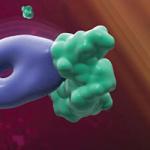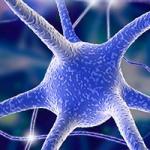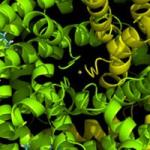
Lei Shi, Ph.D.
Senior Investigator
Molecular Targets and Medications Discovery Branch, Computational Chemistry and Molecular Biophysics Unit
NIDA
Research Topics
Membrane proteins (MP) initiate intracellular signaling pathways, control the flow of energy and materials in and out of the cell, and thereby account for more than 30% of the entire proteome and 40% of drug targets. Research interests in the lab are focused on identifying common and specific structural basis of MP functions to advance the mechanistic understanding of key cellular processes, from the disparate yet intertwined perspectives of functional mechanisms and molecular recognition. Using a combined approach of computational and experimental analysis, we are interested in elucidating the atomistic details of allosteric conformational transitions and propagations during signal transduction and transport processes. In particular, we investigate the critical structural and dynamic elements that determine ligand binding specificities, the interactions among MP and their coupled proteins, and the associations of MP with the lipid bilayer. The findings allow us to rationally optimize existing and develop new compounds that shift the conformational equilibrium of MP, which will facilitate functional studies and lead to novel drug discovery.
Selected Publications
- Lane JR, Abramyan AM, Adhikari P, Keen AC, Lee KH, Sanchez J, Verma RK, Lim HD, Yano H, Javitch JA, Shi L. Distinct inactive conformations of the dopamine D2 and D3 receptors correspond to different extents of inverse agonism. Elife. 2020;9.
- Tsai MM, Chen L, Baumann MH, Canals M, Javitch JA, Lane JR, Shi L. In Vitro Functional Profiling of Fentanyl and Nitazene Analogs at the μ-Opioid Receptor Reveals High Efficacy for Gi Protein Signaling. ACS Chem Neurosci. 2024;15(4):854-867.
- Salomon K, Abramyan AM, Plenge P, Wang L, Bundgaard C, Bang-Andersen B, Loland CJ, Shi L. Dynamic extracellular vestibule of human SERT: Unveiling druggable potential with high-affinity allosteric inhibitors. Proc Natl Acad Sci U S A. 2023;120(41):e2304089120.
- Yano H, Chitsazi R, Lucaj C, Tran P, Hoffman AF, Baumann MH, Lupica CR, Shi L. Subtle Structural Modification of a Synthetic Cannabinoid Receptor Agonist Drastically Increases its Efficacy at the CB1 Receptor. ACS Chem Neurosci. 2023;14(21):3928-3940.
- Lee KH, Fant AD, Guo J, Guan A, Jung J, Kudaibergenova M, Miranda WE, Ku T, Cao J, Wacker S, Duff HJ, Newman AH, Noskov SY, Shi L. Toward Reducing hERG Affinities for DAT Inhibitors with a Combined Machine Learning and Molecular Modeling Approach. J Chem Inf Model. 2021;61(9):4266-4279.
Related Scientific Focus Areas
This page was last updated on Tuesday, September 2, 2025




